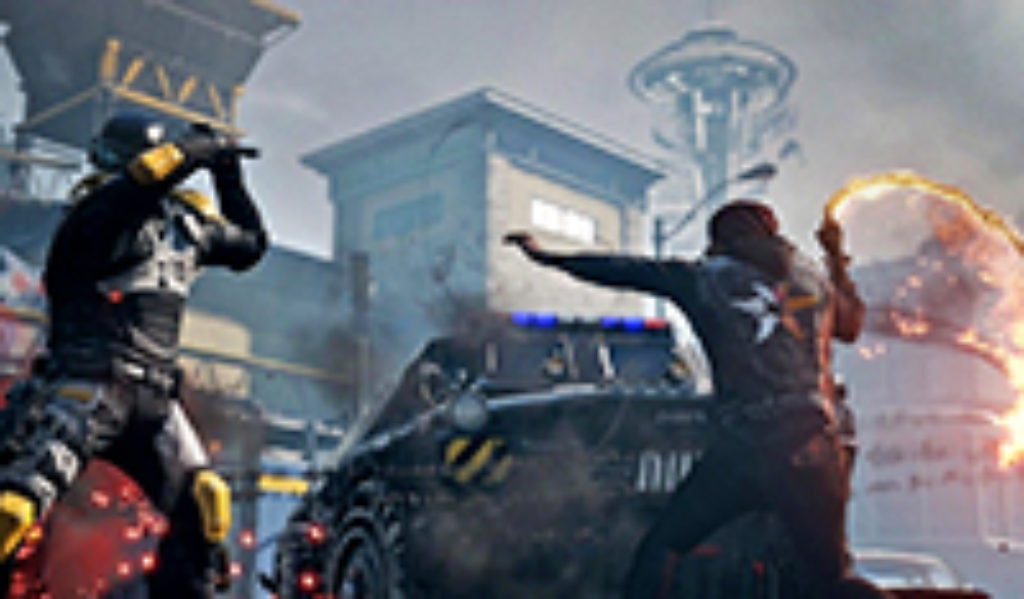
It used to be that only comic book fans spent their spare time daydreaming about superpowers. But in the current entertainment world, everybody’s got something super on their mind. So why shouldn’t inFAMOUS Second Son give gamers a chance to put those powered-up reveries into onscreen action?
Seriously. I’m asking the question: Why shouldn’t it?
A Touch Is All It Takes
This third game in the franchise is set seven years after inFAMOUS 2 and follows the story of young Native American Delsin Rowe. He’s a small-town delinquent who’d rather be spray-painting tags on alley walls and stirring up trouble for his police chief brother, Reggie, than doing any super-swooping in to the rescue. But you get the chance to change all that.
This is a future world, you see, where a fascist government has locked down the country’s major cities in hopes of keeping a lid on a kind of mutant problem. There are people called Conduits who are imbued with special abilities. And the governmental powers that be—concentrated in an organization called the Department of Unified Protection—have decided to round up all those potent “bioterrorists” and keep them under lock and key.
The citizenry is willing to go along with drones patrolling the skies and heavily armed military outposts on every street corner because, well, they’re as scared as the government of their neighbors. So when Delsin accidentally touches one of those powered-up supers and discovers that he has the ability to absorb a Conduit’s zapping capabilities and make them his own, he finds himself roughly shoved into a world that’s not only angry and afraid of him, but determined to come after him with high-caliber weapons in hand.
Not only that, but a female director of the D.U.P.—a superpowered Conduit herself named Brooke Augustine—has hurt some of those closest to Delsin. And the only way he can help them is to somehow absorb Augustine’s power. So it’s up to Delsin and Reggie to head into nearby Seattle and see if they can set things right.
It’s All in the Choice
Once you slide into that vast virtual Seattle and its open-world gameplay, however, you get to choose whether it’s best to “set things right” or “do everybody wrong.” As Delsin, you encounter a number of Conduits—a smoke-powered thug, a neon-boosted junkie, a power-projecting geeky gamer—and absorb their abilities. With them, you’re able to turn into a translucent wisp, fly with angelic wings, run up the sides of buildings and zap folks with neon sniper bolts. And so you must decide whether your great power demands great responsibility—battling the totalitarian government and saving the wounded in the streets—or merely gives you an excuse to blast everything and anything with thoughtless abandon.
The self-sacrificial or self-serving choices you make earn good or bad “karma” points. And storing up enough points in one direction or the other opens up helpful or harmful quests. Ultimately, two different game endings are unveiled based on your actions. Delsin can end up being a true hero loved by all and welcomed back to his hometown with tears of joy, or become someone loathed, feared and rejected by even his closest friends.
Adding the “In” to “Famous”
Even when you pick “good,” however, there’s still quite a bit of bad. Military enemies and powered-up foes are constantly blazing away with everything from laser-sighted sniper rifles to RPGs and heavy artillery to fire- and energy-blasts. Buildings are routinely destroyed and random citizens are often killed. Delsin can shoot missiles from his hands, materialize a large neon-bolt sword, turn chains into smoky whips and blast out automatic weapon-like rapid-fire destruction. (There’s little gore, but splashes of blood accompany some injuries, and the action-violence is quite intense in the way it’s rendered.)
There’s quite a bit of messy dialogue to contend with, too. God’s and Jesus’ names are often abused, along with frequent uses of the s-word, “a‑‑,” “d‑‑n” and “h‑‑‑.” We hear discussions ranging from a junkie’s memories of using illegal drugs on the street to admonitions for a nerdy guy to go out and “get laid.”
I guess that means I should end this review with a reminder that it’s not just the good or bad version of Delsin that gamers need to choose, but also what kinds of games they pick to begin with.